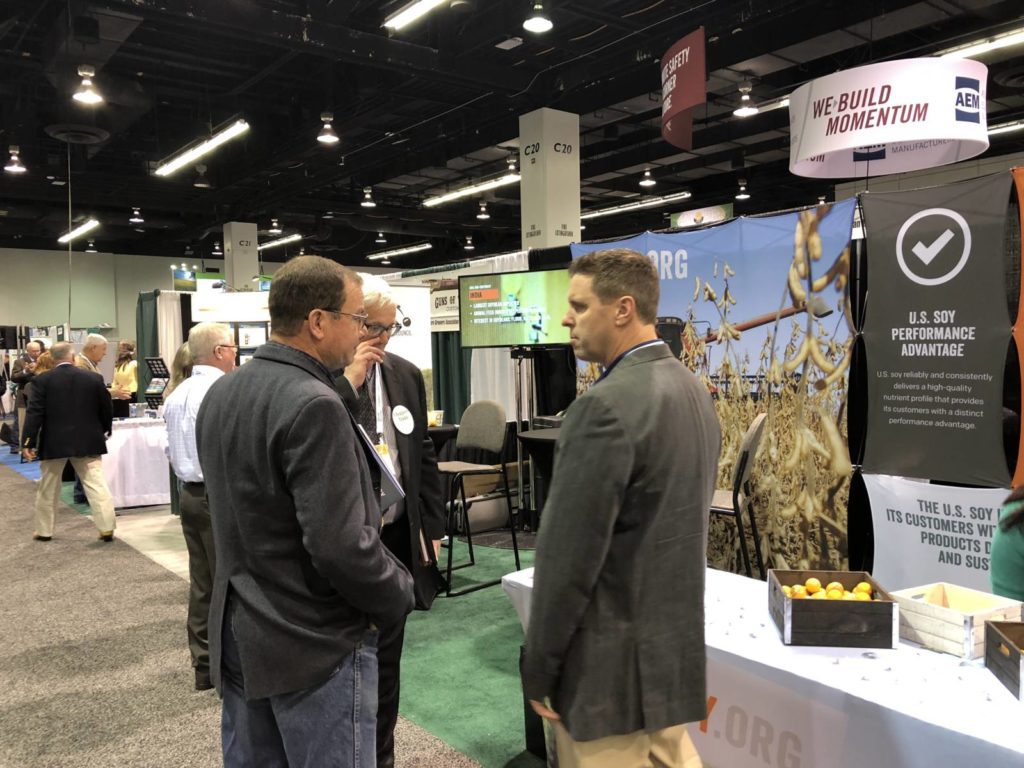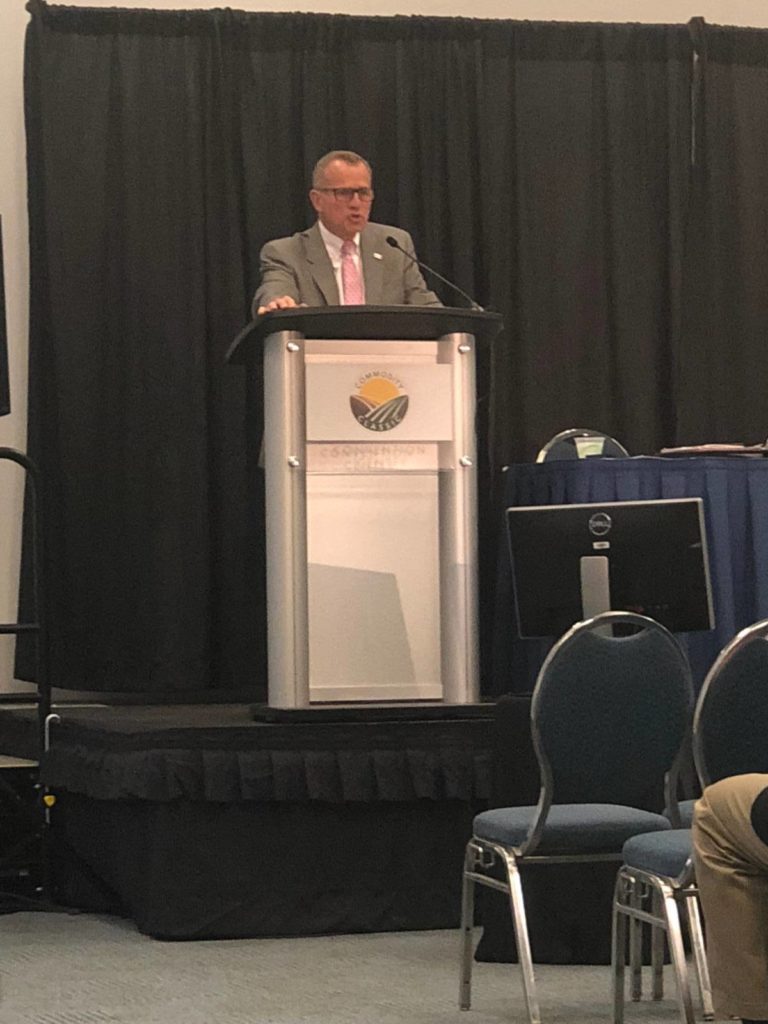Although they’re not quite ready to fire up their planters, U.S. soybean farmers are maximizing their time during the late winter and early spring months. Growers think of this time as their planning season ahead of the fast-approaching planting season.
Meetings and educational sessions keep the U.S. agriculture community engaged and busy year-round. At the 2018 Commodity Classic, sustainability and innovation were a focus for many soybean farmers. The Commodity Classic is generally regarded as the largest farmer-led and farmer-focused convention and trade show in the U.S. The convention provides opportunities for growers, member associations, agribusinesses, and media to check out new innovations and connect with each other.

Two Iowa farmers, Tim Bardole and April Hemmes, said they spent a lot of their time at the Anaheim, California, event networking with other growers. These interactions, they say, help them to focus on how they can continue to produce high quality soybeans for their customers and end users.
“It’s really important for all of us to continue educating ourselves about sustainability,” says Bardole, who serves as secretary for the Iowa Soybean Association (ISA). “Talking to other farmers about what they’re doing to improve their crops and their soil health is really helpful for me. Sometimes I hear about other folks’ ideas and it might be something that I’m able to try out on my own place. When we share what we’re each doing on our own farms, it’s a win for everyone and certainly a win for our customers.”
Hemmes, who serves as an ISA director with Bardole, agrees. “I’ve spent quite a bit of my time here at Commodity Classic talking to other growers about foreign matter. We all want to make sure our customers are getting a clean product,” she says. “Collaboration is really key to this. On our end, we’ll keep doing our part through our sustainability practices. This helps us to ensure that we are sending the best possible product to our end users.”
While networking and collaboration is key to the Commodity Classic experience, attending educational sessions also helps farmers to make good business decisions. In addition to sustainability, innovation, and technology, these sessions covered topics such as pricing, marketing, and strategies that help growers year-round.
USSEC CEO Jim Sutter hosted one of these educational sessions, “Around the World with U.S. Soy.” Sutter spoke about the importance of U.S. soy exports. Sixty percent of the U.S. soybean crop goes overseas, he told attendees, and customers choose U.S. soy for its exceptional composition, consistent supply, sustainable farming practices, and innovation.

